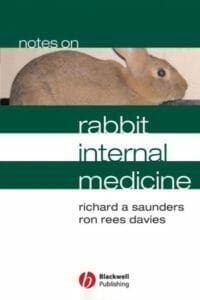Notes on Rabbit Internal Medicine

By Richard A. Saunders and Ron Rees Davies
Notes on Rabbit Internal Medicine PDF. Rabbit medicine is a rapidly expanding area of veterinary practice and rabbits are now the third most popular mammalian pet in the UK. Vets are treating more sick rabbits than ever before, but many vets do not have the clinical experience required to give effective treatment. There is a wealth of information on rabbits available to vets, but much of this is from the laboratory animal field and often isn’t applicable to the pet rabbit.
Filling a gap in current literature available on rabbits, this book provides the reader with essential information and guidance on rabbit internal medicine ensuring rabbits are treated to the same standard as canine and feline patients. Along with the other books in the Notes on series, it is specifically designed, through an accessible note-based style, to ensure veterinarians and students have quick and easy access to the most up-to-date clinical and diagnostic information.
This book provides:
- Differential diagnosis, by presenting complaint and organ systems
- Common laboratory abnormalities and their significance in diagnosis
- Infectious diseases, their diagnosis and treatment
- Therapeutics, and how treatment varies from that of the more commonly encountered companion animals
This Book is Available For Premium Members Only













![Ettinger’s Textbook of Veterinary Internal Medicine 9th Edition [PDF+Videos] Ettinger’s Textbook of Veterinary Internal Medicine 9th Edition [True PDF+Videos]](https://www.vet-ebooks.com/wp-content/uploads/2024/10/ettingers-textbook-of-veterinary-internal-medicine-9th-edition-100x70.jpg)

![Textbook of Veterinary Diagnostic Radiology 8th Edition [PDF+Videos+Quizzes] Thrall’s Textbook of Veterinary Diagnostic Radiology, 8th edition PDF](https://www.vet-ebooks.com/wp-content/uploads/2019/09/textbook-of-veterinary-diagnostic-radiology-8th-edition-100x70.jpg)






